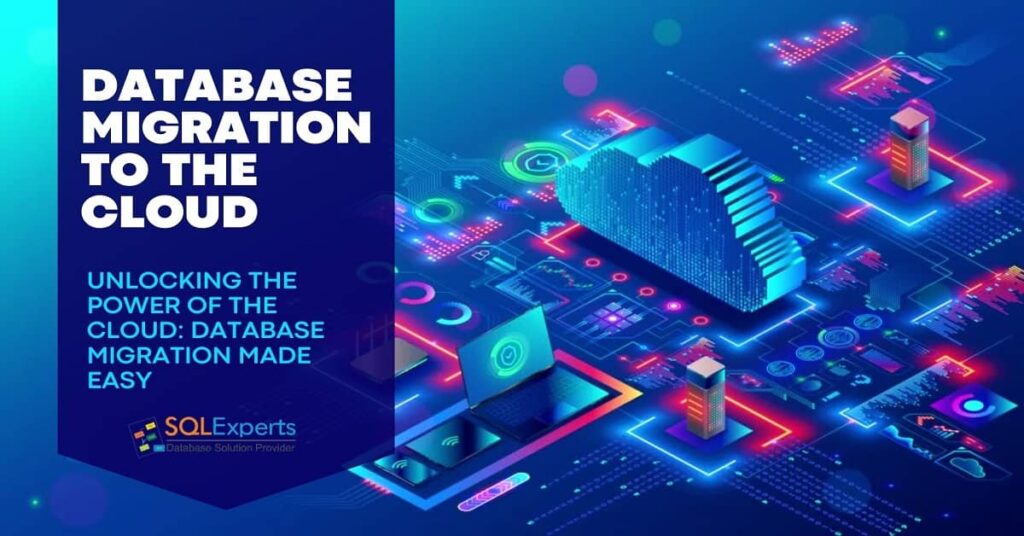In today’s fast-changing business world, cloud computing has become a vital technology driving progress and productivity.
As businesses rely more on digital tools, it’s essential to understand the importance of cloud computing and its benefits.
Put simply, cloud computing provides computing services over the internet, giving businesses access to storage, processing power, and software without needing physical infrastructure on-site.
This blog aims to explore why cloud computing matters for businesses, covering its definition, different service types, benefits, important things to consider before adoption, implementation strategies, emerging trends, challenges, and future possibilities.
From cutting costs and enabling scalability to boosting security and promoting collaboration, cloud computing offers a wide range of benefits for businesses of all sizes.
Join us as we delve into the world of cloud computing and see how it’s changing the way modern businesses operate.
Understanding Cloud Computing
What is Cloud computing in business?
Cloud computing means using the internet to access computing services like storage, processing power, and software.
Instead of having your own servers and data centers, you can rely on third-party providers who offer these resources online.
Basics of Cloud computing:
Cloud computing works by turning physical hardware into virtual resources that can be easily shared and adjusted based on your needs.
This means you can access computing power and applications whenever you need them, paying only for what you use, just like you pay for electricity or water.
Types of Cloud Services (IaaS, PaaS, SaaS)
There are three main types of cloud services in cloud computing…
- Infrastructure as a Service (IaaS): This gives you virtualized computing resources like servers and storage over the internet. With IaaS, you can rent these resources as you need them, which makes it flexible and easy to scale up or down.
- Platform as a Service (PaaS): It basically provides a platform for developers In order to build, deploy, and manage applications without worrying about the underlying infrastructure. It includes tools and services that speed up the development process.
- Software as a Service (SaaS): These types of cloud services software claims over the internet on a subscription basis. You can access these applications through a web browser without needing to install or maintain them. Examples include email, CRM, and productivity tools like Google Workspace and Microsoft Office 365.
Advantages/ Benefits of Cloud Computing
Switching to cloud computing benefits for businesses.
For small businesses, in particular, the main benefits of cloud computing include reduced IT costs, increased flexibility, and enhanced collaboration.
By leveraging cloud services, small businesses can access enterprise-level tools and resources without the hefty price tag, allowing them to compete more effectively in the markets which are great examples of cloud computing for businesses.
- Cost Savings: By using cloud services, you can save money on hardware and maintenance costs. You only pay for what you use, avoiding big upfront expenses.
- Scalability and Flexibility: Cloud computing lets you easily scale resources up or down based on demand. This means you can adjust to changes in your business without buying more hardware.
- Accessibility and Collaboration: With cloud computing, your employees can access data and applications from anywhere with an internet connection. This makes it easier for teams to work together, even if they’re not in the same location.
Cloud computing benefits and risks: Cloud computing offers numerous benefits for businesses, but it’s also important to consider the risks associated with it.
Before businesses decide to move to cloud computing, they need to carefully think about a few important things.
Key Considerations Before Adopting Cloud Computing
Before businesses decide to move to cloud computing, they need to carefully think about a few important things:
Security and Compliance:
When you move your data and applications to the cloud, keeping them safe is very important. Your cloud provider should have strong security measures in place to protect your sensitive information from cyber threats. It’s also crucial to follow industry rules and data protection laws to avoid getting into legal trouble.
Cost Considerations:
While cloud computing can save money in the long run, it’s essential to understand how much it will cost. You should compare your current IT expenses with the costs of cloud services. Think about things like how much data you need to store, how much internet you use, and if you need any extra features or support.
Scalability and Flexibility:
One of the best things about cloud computing is that it can grow with your business and adapt to your needs. Make sure your cloud provider can easily change the amount of resources you use and work well with your existing systems. This means you can adjust things like storage and processing power easily.
By thinking about these important factors, businesses can make smart decisions about moving to the cloud.
This helps them switch smoothly and get all the benefits of cloud computing while avoiding any problems.
Implementing Cloud Computing in Your Business
Choosing the Right Cloud Service Provider
To smoothly transition to cloud computing, it’s crucial to select the right cloud service provider, especially the best cloud computing services for small businesses to fully leverage the cloud computing business application.
Businesses should assess factors like reliability, security, scalability, and cost. Research different providers, read customer feedback, and evaluate their industry reputation. Align your specific needs with the capabilities of the chosen provider to find one that meets your requirements and objectives.
Migration Strategies
Creating a comprehensive migration plan is key to successfully moving to the cloud. Evaluate your current infrastructure, applications, and data to determine the best migration approach.
Prioritize applications and data for migration, plan for downtime, and ensure data integrity throughout the process.
Opt for a phased migration or move your entire infrastructure at once to minimize disruption.
Collaborate with your chosen cloud provider and third-party consultants to execute the migration plan efficiently.
Training and Integration
Employee training and integrating cloud services with existing systems are critical.
Provide proper training on using new cloud-based tools and applications through hands-on sessions, online resources, or external trainers.
Ensure smooth operation and data consistency by closely working with your IT teams and cloud service providers to integrate cloud services with existing workflows and applications.
Invest in training and integration to fully leverage the benefits of cloud computing and achieve a successful implementation.
Cloud Computing Trends and Innovations
Cloud computing keeps changing, bringing new trends and innovations that affect how businesses work.
Here are some important trends to pay attention to:
Edge Computing:
Edge computing is changing how data gets processed by bringing computing power closer to where data is created. This makes cloud-based applications faster and more responsive. With edge computing, businesses can do real-time analytics and get quicker responses, which is great for IoT devices and applications that need to respond quickly.
Serverless Computing:
Serverless computing, also known as Function as a Service (FaaS), lets developers focus on writing code without worrying about managing infrastructure. It allows functions to automatically scale up or down based on demand. This saves money and makes it easier for businesses to build and deploy applications without dealing with operational tasks.
Multi-Cloud and Hybrid Cloud Environments:
More businesses are using multiple cloud providers and different deployment models. Multi-cloud setups give flexibility and redundancy, so businesses can use the best services from different providers without getting locked in. Hybrid cloud combines on-premises infrastructure with public and private cloud services, allowing seamless integration and data control.
These trends are changing how businesses operate, helping them stay competitive in today’s fast-changing world. By keeping up with these advancements, businesses can fully benefit from cloud computing to innovate and grow sustainably.
Overcoming Challenges in Cloud Computing
Cloud computing has many advantages, but businesses also face challenges in making it work smoothly:
Data Privacy and Governance:
Businesses must protect sensitive data and follow regulations in the cloud. This means using strong security measures like encryption and access controls to prevent unauthorized access. They also need clear data governance policies to maintain data integrity, privacy, and compliance with industry rules.
Performance and Reliability:
Sometimes cloud services have outages or slow performance, which can disrupt business. To fix this, businesses should choose cloud providers known for reliability and uptime. They should also set up backup systems to make sure critical applications and data are always available.
Vendor Lock-In:
Relying too much on one cloud provider can limit flexibility and increase costs. To avoid this, businesses can use multiple cloud providers or a mix of cloud and on-premises solutions. This way, they can use the best services from different providers and switch easily if needed.
By tackling these challenges, businesses can get the most out of cloud computing while keeping risks low and operations smooth.
The Future of Cloud Computing
As cloud computing keeps evolving, two main areas will shape its future: AI and machine learning, and quantum computing.
AI and Machine Learning in Cloud Services:
Cloud services are increasingly using AI and machine learning. They provide businesses with powerful tools for analyzing data, automating tasks, and making decisions. Cloud platforms have the infrastructure and resources for training and deploying machine learning models at a large scale. By using AI-powered cloud services, businesses can get valuable insights from their data, improve efficiency, and give customers personalized experiences.
Quantum Computing and Cloud:
Quantum computing can solve complex problems much faster than regular computers. Cloud providers are figuring out ways to add quantum computing to their platforms.
This gives businesses access to quantum processing power when they need it. In the future, quantum cloud services could lead to breakthroughs in areas like cryptography, optimization, and drug discovery.
By using the cloud, businesses can use quantum computing to solve problems that were impossible before.
These changes are the future of cloud computing. AI, machine learning, and quantum computing will work together to drive innovation and open up new opportunities for businesses in different industries.
Conclusion And The Final Thoughts
In conclusion, cloud computing has changed how businesses operate, providing affordable, scalable, and easy-to-use solutions. Its benefits, like lower IT costs, more flexibility, and better collaboration, have made it crucial for modern businesses. But adopting it successfully means thinking about things like security, cost, and scalability. Businesses need to focus on strong security measures, understand pricing, and make sure they can scale up or down as needed to get the most out of cloud computing.
As cloud computing gets better, it’s important for businesses to keep up with new trends and innovations. Using things like AI, machine learning, and quantum computing will help businesses improve how they work and come up with new ideas. With these technologies, businesses can learn more from their data, make better decisions, and give customers better experiences.
Looking ahead, the future of cloud computing looks bright. As businesses deal with the fast-changing digital world, cloud computing will be really important for growing and staying competitive. By using cloud technologies and keeping up with changes, businesses can set themselves up for long-term success in a more digital world.



